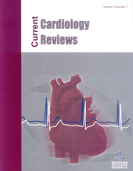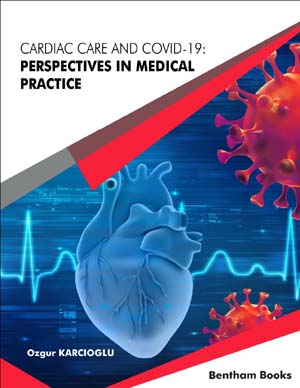Abstract
Heart failure (HF) is a global healthcare burden and a leading cause of morbidity and mortality worldwide. Type 2 diabetes mellitus (T2DM) appears to be one of the major risk factors that significantly worsen HF prognosis and increase the risk of fatal cardiovascular outcomes. Despite a great knowledge of pathophysiological mechanisms involved in HF development and progression, hospitalization rates in patients with HF and concomitant T2DM remain elevated. In this review, we discuss the complex interplay between systemic neurohumoral regulation and local cardiac mechanisms participating in myocardial remodeling and HF development in T2DM with special attention to cardiomyocyte energy metabolism, mitochondrial function and calcium metabolism, cardiomyocyte hypertrophy and death, extracellular matrix remodeling.
Keywords: Heart failure, type 2 diabetes mellitus, pathophysiology, cardiac remodeling, glucotoxicity, lipotoxicity.
[http://dx.doi.org/10.1586/erc.09.187] [PMID: 20136608]
[http://dx.doi.org/10.1016/S2214-109X(17)30196-1] [PMID: 28476564]
[http://dx.doi.org/10.15420/cfr.2016:25:2] [PMID: 28785469]
[http://dx.doi.org/10.1007/s10741-018-9685-0] [PMID: 29516230]
[http://dx.doi.org/10.1007/s11886-018-0978-7] [PMID: 29667019]
[http://dx.doi.org/10.1161/CIRCHEARTFAILURE.115.002744] [PMID: 26915374]
[http://dx.doi.org/10.1056/NEJMoa1911303] [PMID: 31535829]
[http://dx.doi.org/10.1056/NEJMoa2022190] [PMID: 32865377]
[http://dx.doi.org/10.2147/DDDT.S269514]
[http://dx.doi.org/10.1007/s40256-021-00486-6] [PMID: 34189716]
[http://dx.doi.org/10.3389/fphar.2021.708177] [PMID: 34322029]
[PMID: 8668603]
[http://dx.doi.org/10.1016/j.carpath.2011.11.007] [PMID: 22227365]
[http://dx.doi.org/10.1136/bmj.320.7228.167] [PMID: 10634740]
[http://dx.doi.org/10.1155/2015/341583] [PMID: 26064978]
[http://dx.doi.org/10.1093/eurheartj/ehs041] [PMID: 22507981]
[http://dx.doi.org/10.1016/j.amjms.2016.06.016] [PMID: 28104100]
[http://dx.doi.org/10.1007/s10741-019-09901-2] [PMID: 31832833]
[http://dx.doi.org/10.3390/jcdd6020014] [PMID: 30934934]
[http://dx.doi.org/10.1007/s10741-019-09855-5] [PMID: 31512149]
[http://dx.doi.org/10.3317/jraas.2004.024] [PMID: 15526242]
[http://dx.doi.org/10.1371/journal.pone.0165703] [PMID: 27802313]
[http://dx.doi.org/10.1177/1470320318803009] [PMID: 30264671]
[http://dx.doi.org/10.2337/dc12-2165] [PMID: 23757433]
[http://dx.doi.org/10.1016/S0735-1097(83)80040-0] [PMID: 6343460]
[http://dx.doi.org/10.1042/CS20150469] [PMID: 26637405]
[http://dx.doi.org/10.1002/ejhf.656] [PMID: 27766748]
[http://dx.doi.org/10.2174/1568026619666190826163536] [PMID: 31448711]
[http://dx.doi.org/10.1210/jendso/bvaa052] [PMID: 32537542]
[http://dx.doi.org/10.1038/s41401-018-0042-6] [PMID: 29867137]
[http://dx.doi.org/10.5114/aoms.2014.43748] [PMID: 25097587]
[http://dx.doi.org/10.1007/s10741-019-09881-3] [PMID: 31686283]
[http://dx.doi.org/10.1177/2048004019843047] [PMID: 31007907]
[http://dx.doi.org/10.1161/CIRCHEARTFAILURE.115.002895] [PMID: 27059805]
[http://dx.doi.org/10.1097/CRD.0b013e318274956d] [PMID: 22990373]
[http://dx.doi.org/10.1016/j.bbadis.2016.01.011] [PMID: 26775029]
[http://dx.doi.org/10.4239/wjd.v10.i10.490] [PMID: 31641426]
[http://dx.doi.org/10.1172/JCI62834] [PMID: 23281409]
[http://dx.doi.org/10.1007/s10741-017-9663-y] [PMID: 29192360]
[http://dx.doi.org/10.1073/pnas.1513047112] [PMID: 26217001]
[http://dx.doi.org/10.1016/j.jacbts.2020.11.002] [PMID: 33532665]
[http://dx.doi.org/10.1016/j.yjmcc.2013.03.005] [PMID: 23507255]
[http://dx.doi.org/10.1016/j.bbamcr.2014.08.002] [PMID: 25110346]
[http://dx.doi.org/10.1007/978-1-4614-4756-6_30] [PMID: 23224894]
[http://dx.doi.org/10.1016/j.cmet.2015.01.005] [PMID: 25651173]
[http://dx.doi.org/10.3389/fphys.2018.01303] [PMID: 30258369]
[http://dx.doi.org/10.12997/jla.2019.8.1.26] [PMID: 32821697]
[http://dx.doi.org/10.1016/j.yjmcc.2014.10.019] [PMID: 25450609]
[http://dx.doi.org/10.1016/j.ijcard.2017.03.002] [PMID: 28285801]
[http://dx.doi.org/10.1152/ajpheart.00212.2017] [PMID: 29196344]
[http://dx.doi.org/10.1253/circj.CJ-16-0062] [PMID: 26853555]
[http://dx.doi.org/10.12659/MSMBR.900437] [PMID: 27450399]
[http://dx.doi.org/10.4103/ijhas.IJHAS_104_17]
[http://dx.doi.org/10.1016/j.echo.2014.10.003] [PMID: 25559473]
[http://dx.doi.org/10.1016/j.yjmcc.2010.03.018] [PMID: 20381498]
[http://dx.doi.org/10.1291/hypres.29.1029] [PMID: 17378376]
[http://dx.doi.org/10.3390/ijms20092164] [PMID: 31052420]
[http://dx.doi.org/10.1111/j.1440-1681.2009.05243.x] [PMID: 19566828]
[http://dx.doi.org/10.1042/CS20190585] [PMID: 31337673]
[http://dx.doi.org/10.1038/s41569-020-0339-2] [PMID: 32080423]
[http://dx.doi.org/10.1007/s00210-020-01957-4] [PMID: 32776158]
[http://dx.doi.org/10.1038/s41569-018-0007-y] [PMID: 29674714]
[http://dx.doi.org/10.1007/s10741-016-9532-0] [PMID: 26872675]
[http://dx.doi.org/10.1007/s10741-016-9538-7] [PMID: 26886226]
[http://dx.doi.org/10.1002/cbin.11137] [PMID: 30958602]
[http://dx.doi.org/10.1186/s12967-017-1191-y] [PMID: 28460644]
[http://dx.doi.org/10.1007/s00395-016-0549-2] [PMID: 27043720]
[http://dx.doi.org/10.1248/bpb.b15-00288] [PMID: 26235571]
[http://dx.doi.org/10.1007/s11010-015-2622-9] [PMID: 26769665]
[http://dx.doi.org/10.1016/j.bbrc.2017.06.190] [PMID: 28676391]
[http://dx.doi.org/10.4103/0971-5916.171290] [PMID: 26658596]
[http://dx.doi.org/10.3390/ijms20143552] [PMID: 31330848]
[http://dx.doi.org/10.1186/s12929-017-0375-3] [PMID: 28882140]
[http://dx.doi.org/10.1038/s41419-018-0408-1] [PMID: 29511177]
[http://dx.doi.org/10.1016/j.jnutbio.2019.03.007] [PMID: 31030170]
[http://dx.doi.org/10.1093/eurheartj/ehp004] [PMID: 19196721]
[http://dx.doi.org/10.1536/ihj.53.182] [PMID: 22790687]
[http://dx.doi.org/10.1007/s11886-018-1067-7] [PMID: 30259192]
[http://dx.doi.org/10.1016/j.yjmcc.2018.01.018] [PMID: 29426003]
[http://dx.doi.org/10.1152/physrev.00022.2018] [PMID: 31364924]
[http://dx.doi.org/10.1016/j.tcb.2016.06.004] [PMID: 27368376]
[http://dx.doi.org/10.1073/pnas.1305538110] [PMID: 23818611]
[http://dx.doi.org/10.1161/CIRCULATIONAHA.117.029566] [PMID: 28827219]
[http://dx.doi.org/10.1172/JCI43171] [PMID: 20890047]
[http://dx.doi.org/10.3389/fphar.2020.00042] [PMID: 32116717]
[http://dx.doi.org/10.1172/JCI31060] [PMID: 17694179]
[http://dx.doi.org/10.1016/j.yjmcc.2016.12.007] [PMID: 28025046]
[http://dx.doi.org/10.1038/cdd.2008.163] [PMID: 19008922]
[PMID: 23638318]
[http://dx.doi.org/10.1016/j.tcb.2012.05.006] [PMID: 22748206]
[http://dx.doi.org/10.1128/MCB.06159-11] [PMID: 22025673]
[http://dx.doi.org/10.1042/BST20130030] [PMID: 23863160]
[http://dx.doi.org/10.1042/BCJ20160780] [PMID: 28408430]
[http://dx.doi.org/10.17179/excli2018-1353] [PMID: 30190661]
[http://dx.doi.org/10.1016/j.bbadis.2014.05.020] [PMID: 24882754]
[http://dx.doi.org/10.1042/BSR20170982] [PMID: 30021848]
[http://dx.doi.org/10.1172/JCI63888] [PMID: 23023704]
[http://dx.doi.org/10.4161/auto.18980] [PMID: 22498478]
[http://dx.doi.org/10.12659/MSMBR.913436] [PMID: 30713336]
[http://dx.doi.org/10.1016/j.healun.2017.02.012] [PMID: 28341100]
[http://dx.doi.org/10.1093/cvr/cvp287] [PMID: 19696071]
[http://dx.doi.org/10.1089/ars.2013.5823] [PMID: 25133688]
[http://dx.doi.org/10.1016/j.hfc.2016.12.001] [PMID: 28279415]
[http://dx.doi.org/10.1152/ajpheart.00532.2008] [PMID: 18676687]
[http://dx.doi.org/10.3389/fcvm.2020.585309] [PMID: 33195472]
[http://dx.doi.org/10.1016/j.yjmcc.2016.11.013] [PMID: 27913284]
[http://dx.doi.org/10.1155/2017/1310265] [PMID: 28421204]
[http://dx.doi.org/10.1016/j.yjmcc.2011.10.023] [PMID: 22085703]
[http://dx.doi.org/10.1172/JCI87491] [PMID: 28459429]
[http://dx.doi.org/10.1161/CIRCRESAHA.119.311148] [PMID: 31219741]
[http://dx.doi.org/10.1161/CIRCRESAHA.114.302533] [PMID: 24577967]
[http://dx.doi.org/10.1007/s00018-013-1349-6] [PMID: 23649149]
[http://dx.doi.org/10.1186/1755-1536-5-15] [PMID: 22943504]
[http://dx.doi.org/10.1016/j.matbio.2017.12.001] [PMID: 29247693]
[http://dx.doi.org/10.2174/1573403X15666190509090832] [PMID: 31072294]
[http://dx.doi.org/10.1016/j.matbio.2018.01.013] [PMID: 29371055]
[http://dx.doi.org/10.1016/j.jchf.2017.04.012] [PMID: 28711447]
[http://dx.doi.org/10.1161/CIRCRESAHA.118.314438] [PMID: 30686120]
[http://dx.doi.org/10.1002/ejhf.680] [PMID: 27891745]
[http://dx.doi.org/10.1152/ajpheart.00099.2018] [PMID: 30141979]
[http://dx.doi.org/10.1016/j.yjmcc.2015.10.027]
[http://dx.doi.org/10.3892/mmr.2018.8688] [PMID: 29512713]
[http://dx.doi.org/10.3389/fnut.2020.564352] [PMID: 33344490]
[http://dx.doi.org/10.1007/s13105-020-00733-5] [PMID: 32157499]
[http://dx.doi.org/10.1007/s00395-008-0715-2] [PMID: 18347835]
[http://dx.doi.org/10.2174/1381612821666150710150445] [PMID: 26166604]
[http://dx.doi.org/10.1016/j.bbalip.2016.03.008] [PMID: 26972373]
[http://dx.doi.org/10.1172/JCI120849] [PMID: 30124471]
[http://dx.doi.org/10.1186/1471-2350-12-10] [PMID: 21244673]
[PMID: 10516792]
[http://dx.doi.org/10.1007/s003950050167] [PMID: 10826498]
[http://dx.doi.org/10.1016/j.jhevol.2014.06.013] [PMID: 25488255]
[http://dx.doi.org/10.1042/BCJ20170416] [PMID: 28986507]
[http://dx.doi.org/10.1093/jn/138.2.397] [PMID: 18203910]
[http://dx.doi.org/10.1111/obr.12742] [PMID: 30261552]
[http://dx.doi.org/10.4330/wjc.v7.i9.511] [PMID: 26413228]
[http://dx.doi.org/10.1007/s00018-015-1982-3] [PMID: 26153463]
[http://dx.doi.org/10.1152/physrev.00015.2009] [PMID: 20086077]
[http://dx.doi.org/10.1172/JCI10947] [PMID: 11285300]
[http://dx.doi.org/10.1097/00075197-199807000-00002] [PMID: 10565368]
[http://dx.doi.org/10.1126/science.1058714] [PMID: 11269319]
[http://dx.doi.org/10.1074/jbc.271.3.1385] [PMID: 8576128]
[http://dx.doi.org/10.1152/physrev.00043.2019] [PMID: 32730113]
[http://dx.doi.org/10.1161/CIRCHEARTFAILURE.114.001457] [PMID: 25477432]
[http://dx.doi.org/10.2337/db15-0627] [PMID: 26438611]
[http://dx.doi.org/10.1074/jbc.M103826200] [PMID: 11574533]
[http://dx.doi.org/10.1093/eurjhf/hfr173] [PMID: 22253453]
[http://dx.doi.org/10.1016/j.jtcvs.2010.05.009] [PMID: 20542299]
[http://dx.doi.org/10.3390/cells10113259] [PMID: 34831481]
[http://dx.doi.org/10.1152/ajpheart.1980.239.5.H614] [PMID: 7001927]
[http://dx.doi.org/10.3390/cells9122548] [PMID: 33256212]
[http://dx.doi.org/10.1161/01.CIR.88.3.1273] [PMID: 8353889]
[http://dx.doi.org/10.1177/1074248417729881] [PMID: 28901167]
[http://dx.doi.org/10.1152/ajpheart.00855.2004] [PMID: 15604129]
[http://dx.doi.org/10.1002/path.4113] [PMID: 23011912]
[http://dx.doi.org/10.1016/j.mito.2019.03.005] [PMID: 30905865]
[http://dx.doi.org/10.1161/01.RES.55.6.816] [PMID: 6499136]
[http://dx.doi.org/10.1161/01.RES.62.5.931] [PMID: 3359577]




















